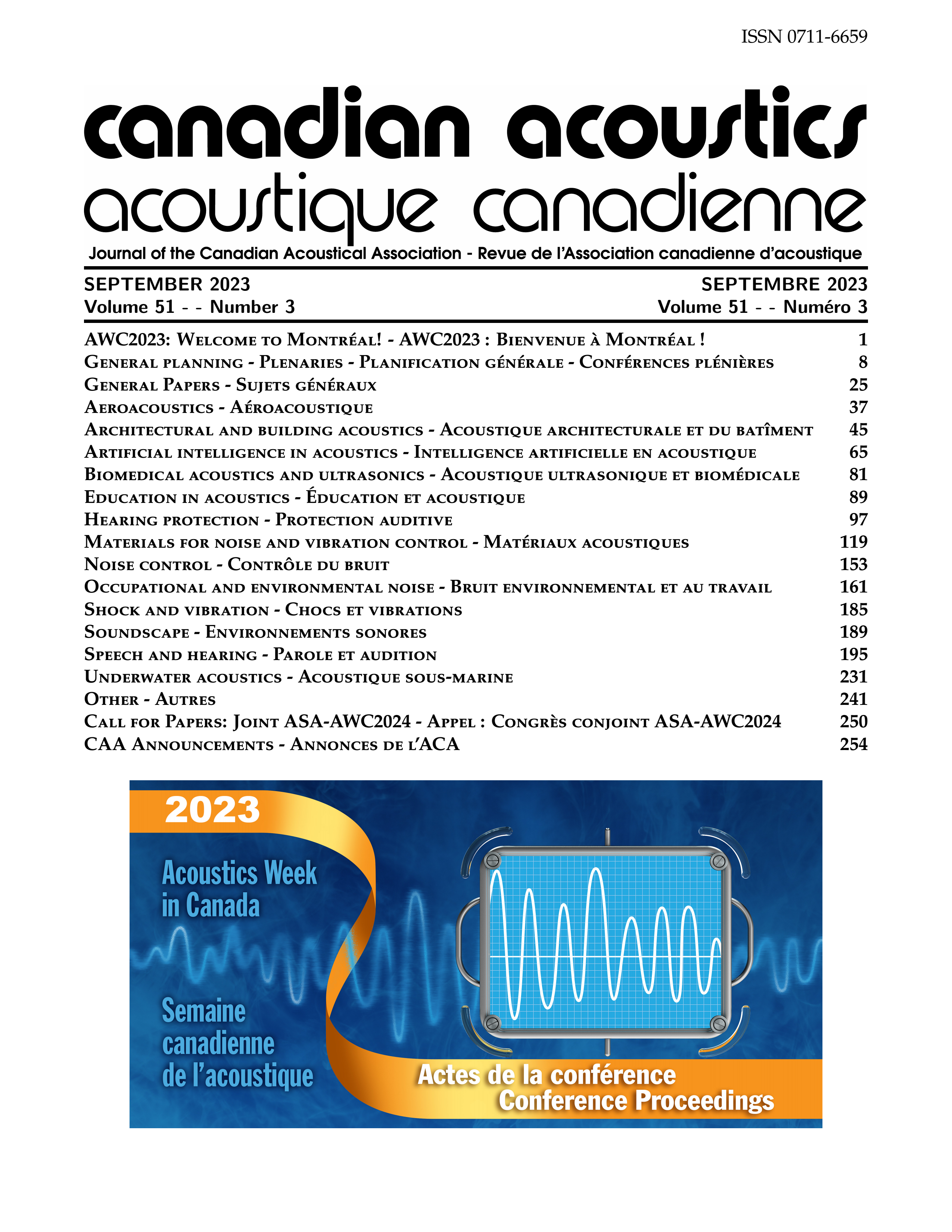Modeling of Field Sound Insulation for Multi-Layered CLT Floor Assemblies Using Artificial Neural Networks
Abstract
A means prediction tool based on an artificial neural network approach is developed to predict standardized level differences and standardized impact sound pressure levels for multi-layered CLT-based floor systems. The collected data are 104 field sound insulation measurements in one-third-octave bands from 50 Hz to 5 kHz. The acoustic measurements were implemented in 15 different buildings in Europe and for different room functions and sizes. Various structural parameters were organized to develop the network model, such as floor components, surrounding wall types and their components, junction types and their visco-elastic interlayer, receiving room volume, surface separating area, and more. The developed network demonstrates satisfactory results in predicting standardized field airborne and impact sound insulation curves across all frequencies. The weighted standardized level differences DnTw are estimated with 1 dB variation, while up to 2 dB for standardized impact sound pressure level L0 nTw. A good correlation is highlighted for airborne estimations in the middle frequencies (200 - 1000 Hz), while higher frequencies often reveal some deviations. However, impact insulation estimations showed better accuracy in the high-frequency range (1.25 - 5 kHz).Additional Files
Published
How to Cite
Issue
Section
License
Author Licensing Addendum
This Licensing Addendum ("Addendum") is entered into between the undersigned Author(s) and Canadian Acoustics journal published by the Canadian Acoustical Association (hereinafter referred to as the "Publisher"). The Author(s) and the Publisher agree as follows:
-
Retained Rights: The Author(s) retain(s) the following rights:
- The right to reproduce, distribute, and publicly display the Work on the Author's personal website or the website of the Author's institution.
- The right to use the Work in the Author's teaching activities and presentations.
- The right to include the Work in a compilation for the Author's personal use, not for sale.
-
Grant of License: The Author(s) grant(s) to the Publisher a worldwide exclusive license to publish, reproduce, distribute, and display the Work in Canadian Acoustics and any other formats and media deemed appropriate by the Publisher.
-
Attribution: The Publisher agrees to include proper attribution to the Author(s) in all publications and reproductions of the Work.
-
No Conflict: This Addendum is intended to be in harmony with, and not in conflict with, the terms and conditions of the original agreement entered into between the Author(s) and the Publisher.
-
Copyright Clause: Copyright on articles is held by the Author(s). The corresponding Author has the right to grant on behalf of all Authors and does grant on behalf of all Authors, a worldwide exclusive license to the Publisher and its licensees in perpetuity, in all forms, formats, and media (whether known now or created in the future), including but not limited to the rights to publish, reproduce, distribute, display, store, translate, create adaptations, reprints, include within collections, and create summaries, extracts, and/or abstracts of the Contribution.


